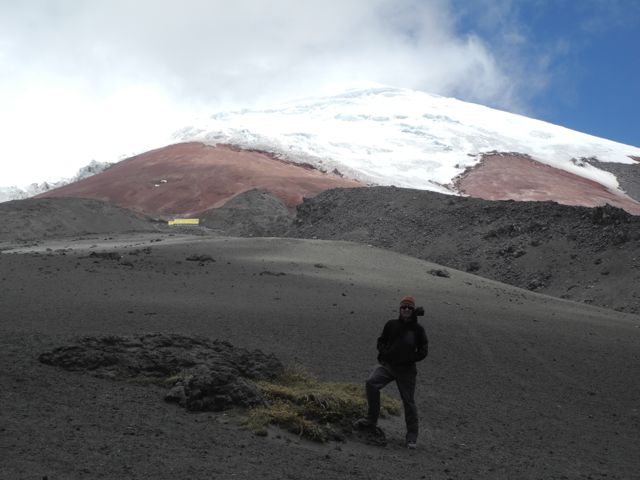Cotopaxi was the volcano of the day 8. Roads to the volcano are west to it, not leaving the team to visit the eastern part of the volcano which is apparently more humid and more biodiverse, the team was able to collect D. ericoides. Landscape was surreal. After the visit the team headed to Papallacta a little town pass el páramo de la virgen on the road to the Amazon. The team enjoyed the iconic hot springs of the town as a preparation for the last two days of collecting.
Ecuador day 6
The team visited a collection site between the towns of Gualaceo and Limon. It turns out to be one of the most diverse places in terms of Diplostephium. Five species were collected ! After the collection, the team traveled to Riobamba, a small city close to the next collection spot: Chimborazo.
Ecuador day 5
Day five was a Cajas day. The team visited Cajas National Park (east to Cuenca) and collected two species of Diplostephium. Cajas is a beautiful place and it is a big big park. Although it seems clear that Diplostephium likes the east mountains better since more species are found there. I am tired, so please anjoy all the photos.
Ecuador day 4: the new hat
Day 4 was was quiet. We returned to Cuenca from Podocarpus National Park. We only sampled one locality in the paramo Del Carboncillo. We collected one species of Diplostephium (already collected before in a different location) and one species of Llerasia, the latter had beautiful yellow heads with a honey smell. I also bought a new hat in Cuenca. Tomorrow Cajas National Park is waiting for us.
Ecuador day 3: the lost hat
One of the most amazing things of the hiking was the páramo, it was a very different páramo from the one of Colombia, in the peaks were the wind is really strong the vegetation was dominated by some dwarf Bambusoideae grass. In between this grass Diplostephium empretifolium was found, a compact subsrhub apparently adapted to the strong wind.
By the way, in one the pass up there the wind took my hat way, it blow 20 m high and then fell in the cliff, it was a funny/sad lost. That hat traveled with me for more than three years from 2009 to uncountable places, I hope I can find another one here.
Ecuador !!!
El proyecto Diplostephium viaja a Ecuador para hacer salidas de campo, colectar especímenes, visitar herbarios y hacer intercambios acádemicos con botánicos locales.
The Diplotephium project is now traveling in Ecuador doing field trips, herbarium curation, and academic collaboration with local botanists.
Going Live
Today is the official launch of Diplostephium, a site devoted to the study of plant biology and evolution !





























